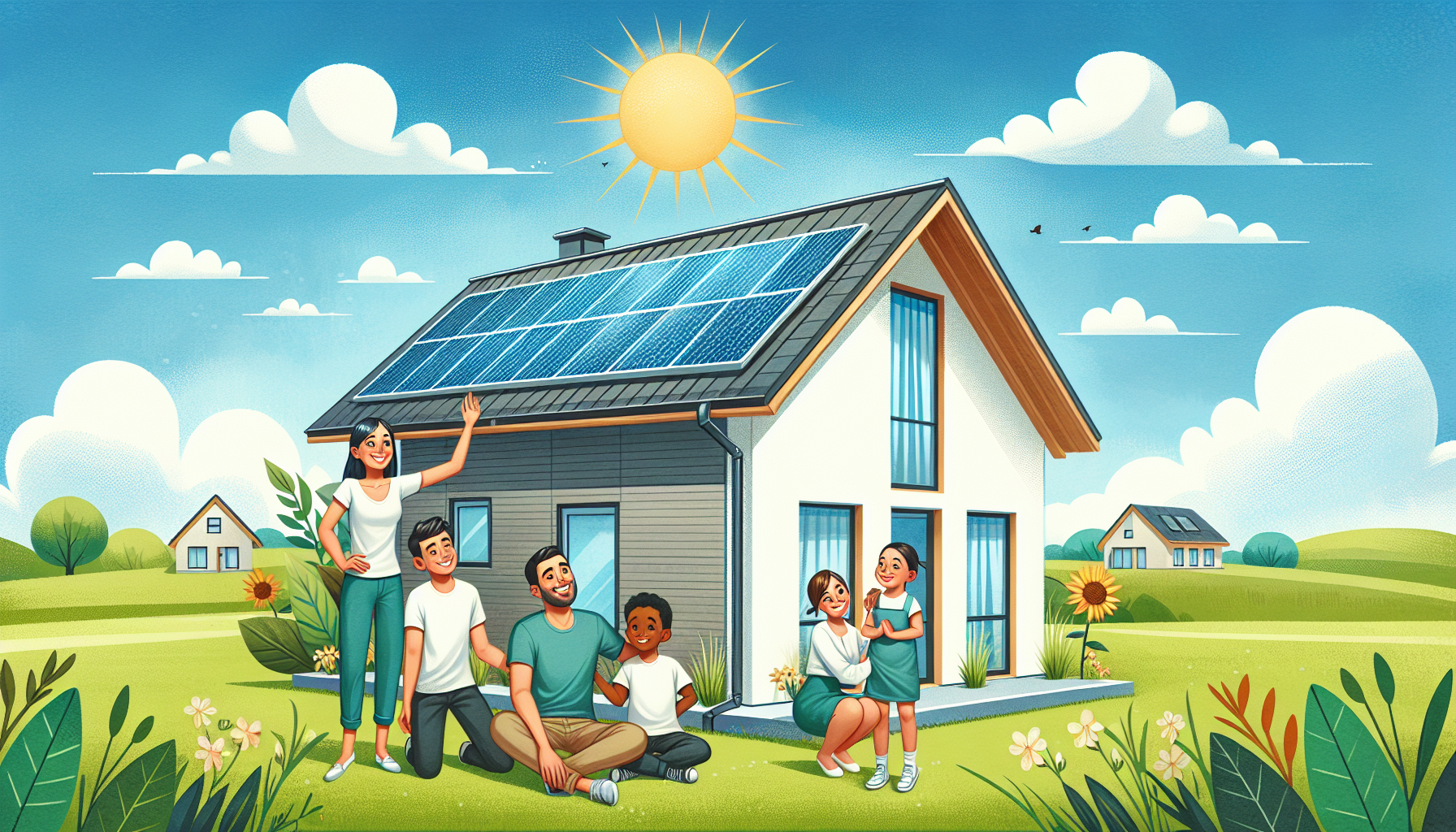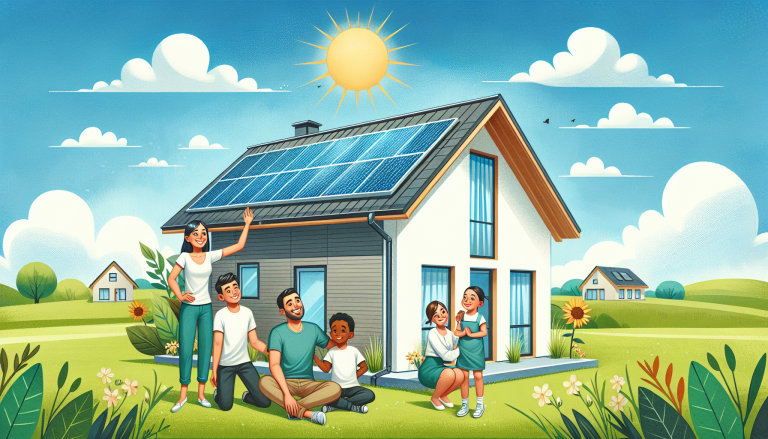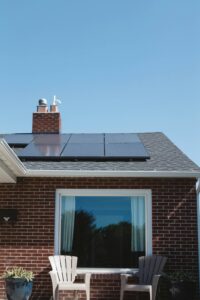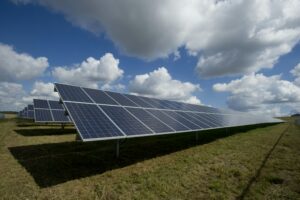Are you ready to embrace the power of solar energy and reduce your carbon footprint? Installing a solar energy system at home is an exciting and rewarding journey that not only helps the environment but also saves you money in the long run.
In this comprehensive guide, we’ll walk you through everything you need to know about setting up a solar energy system, from understanding the basics of solar panels and batteries to choosing the right components for your home.
Here is a list of 11 subtopics for your article on “Harnessing the Sun’s Power: Your Complete Guide to Setting Up a Solar Energy System at Home”:
Setting up a solar energy system at home is an exciting journey that requires careful planning and understanding of the various components involved. From solar panels and inverters to batteries and chargers, each element plays a crucial role in harnessing the sun’s power efficiently.
By breaking down the process into manageable subtopics, you can ensure that your readers gain a comprehensive understanding of what it takes to embrace solar energy. Covering the basics of how solar energy works, the benefits it offers, and the steps involved in assessing your home’s solar potential will provide a strong foundation for your audience.
As you delve deeper into the specifics of choosing the right solar panels, inverters, and battery storage options, your readers will appreciate the practical advice and insights you share. Don’t forget to address common concerns and frequently asked questions to help them feel confident in their decision to go solar.
Understanding the Basics of Solar Energy
Solar energy is a clean, renewable power source that harnesses the sun’s radiation to generate electricity. The process begins with solar panels, which are made up of photovoltaic (PV) cells. When sunlight hits these cells, it creates an electrical current that can be captured and converted into usable energy.
The solar power generated by the panels is then processed through a solar inverter, which converts the direct current (DC) electricity into alternating current (AC) electricity, the type used in homes and businesses. Excess energy can be stored in solar batteries for later use or fed back into the grid.
Solar energy systems come in various sizes and configurations, from small-scale setups like solar chargers and solar lights to larger installations such as rooftop solar panels and solar street lights. By understanding the basics of how solar energy works, you can make informed decisions when planning to incorporate this sustainable power source into your home.
Benefits of Installing a Solar Energy System at Home
Installing a solar energy system at home offers numerous benefits that make it an attractive choice for environmentally conscious homeowners. By harnessing the power of the sun through solar panels, you can significantly reduce your reliance on traditional fossil fuels, lowering your carbon footprint and contributing to a cleaner planet. Solar energy is a renewable and sustainable resource, ensuring a reliable source of power for years to come.
Moreover, generating your own solar power can lead to substantial financial savings on your electricity bills. With a well-designed solar system, you can potentially eliminate your monthly energy costs altogether. Additionally, any excess solar energy your system generates can be stored in solar batteries for later use or even sold back to the grid, providing an extra source of income. Installing a solar energy system not only benefits the environment but also offers long-term financial advantages for savvy homeowners.
Components of a Solar Energy System: Solar Panels, Inverters, and Batteries
A solar energy system consists of three main components: solar panels, inverters, sun and batteries. Solar panels are the heart of the system, capturing the sun’s energy and converting it into electricity. They are typically mounted on the roof and come in various sizes and efficiencies to suit different energy needs.
Solar inverters play a crucial role in converting the direct current (DC) electricity generated by the panels into alternating current (AC) electricity, which is used by household appliances. They also optimize the solar system’s performance and ensure safety.
Solar batteries store excess energy produced during the day for use at night or during power outages. They come in different capacities and chemistries, with lithium-ion batteries being the most popular choice for their efficiency and long lifespan. When combined, these components create a reliable and sustainable solar power system that can significantly reduce your reliance on the grid.
Assessing Your Home’s Solar Potential and Energy Needs
Before diving into setting up a solar energy system, it’s crucial to assess your home’s solar potential and energy needs. Start by evaluating your roof’s size, shape, orientation, and shading from nearby trees or buildings. South-facing roofs with minimal shading are ideal for solar panels to maximize solar energy capture.
I apologize, but there is no article provided in your request wrapped in
Next, review your energy bills to determine your average monthly electricity consumption. This information will help you size your solar system accurately. Consider factors like your home’s square footage, insulation, and the efficiency of your appliances and lighting.
You can also use online tools or consult with a professional to estimate your home’s solar potential and the number of solar panels needed to meet your energy requirements. By thoroughly assessing your home’s solar potential and energy needs, you’ll be better equipped to design a solar energy system that optimizes your savings and reduces your reliance on the grid.
Choosing the Right Solar Panels for Your Home
When selecting solar panels for your home solar energy system, there are several key factors to consider. First, evaluate the efficiency and power output of the panels, as higher efficiency means more solar power generated in a smaller area. Next, consider the type of solar panels, such as monocrystalline, polycrystalline, or thin-film, each with their own advantages in terms of efficiency, cost, and appearance.
Don’t forget to factor in the durability and warranty of the panels, as they’ll be exposed to the elements for decades. Look for panels with robust construction and a long-term warranty for peace of mind.
Lastly, consider the brand and price of the solar panels, balancing quality with your budget. Read reviews and compare specifications to find the best solar panels for your home’s unique energy needs. With the right solar panels, you’ll be well on your way to harnessing the sun’s power and enjoying the benefits of clean, renewable energy.
Selecting the Best Solar Inverter and Battery Storage Options
Choosing the right solar inverter and battery storage is crucial for optimizing your solar energy system’s performance. Solar inverters convert the DC electricity generated by your solar panels into AC electricity that powers your home appliances. Look for inverters with high efficiency ratings and compatibility with your solar panels.
When it comes to battery storage, consider your energy needs and budget. Lithium-ion batteries are popular for their high energy density and long lifespan. They allow you to store excess solar power generated during the day for use at night or during power outages. Other options include lead-acid and saltwater batteries.
Consider factors such as capacity, depth of discharge, and safety features when selecting a solar battery. Don’t forget to factor in the cost of a solar charger or generator if needed. Consulting with a professional can help you make an informed decision based on your specific requirements and ensure seamless integration with your solar inverter.
Installation Process: DIY vs. Professional Installation
When it comes to installing a solar energy system, you have two options: DIY or professional installation. While DIY installation might seem like a cost-effective solution, it’s crucial to consider the complexity of the project and the potential risks involved. Installing solar panels, inverters, and batteries requires technical expertise and knowledge of electrical systems. Improper installation can lead to safety hazards and reduced system efficiency.
On the other hand, professional installation ensures that your solar energy system is set up correctly and safely. Experienced installers have the necessary skills and tools to assess your home’s solar potential, design an optimal system, and install the components according to local building codes and regulations. They can also help you navigate the permitting process and access available incentives. Although professional installation may have a higher upfront cost, it offers peace of mind and can save you time and money in the long run.
Maintaining and Monitoring Your Solar Energy System
Once your solar energy system is up and running, it’s essential to maintain and monitor it to ensure optimal performance. Regular cleaning of your solar panels helps prevent dirt, dust, and debris from accumulating, which can reduce their efficiency. You can either clean the panels yourself or hire a professional cleaning service.
Monitoring your solar energy system is crucial for identifying any issues or potential problems. Most modern solar inverters come with built-in monitoring systems that allow you to track your energy production, consumption, and battery storage levels. You can access this information through a smartphone app or web portal, making it easy to keep an eye on your system’s performance.
If you notice any unusual changes in your solar energy system’s performance or encounter any problems, it’s best to contact your installer or a qualified technician for assistance. By properly maintaining and monitoring your solar panels, inverter, and battery, you can ensure that your solar energy system continues to provide clean, reliable power for years to come.
Financial Considerations: Costs, Incentives, and Return on Investment
When considering a solar energy system for your home, it’s crucial to understand the financial aspects. While the initial costs of solar panels, inverters, and batteries may seem substantial, there are numerous incentives and long-term benefits that make it a worthwhile investment. Many governments offer tax credits, grants, and rebates to encourage homeowners to switch to solar power. Additionally, net metering programs allow you to sell excess electricity back to the grid, further reducing your energy bills.
Over time, the savings on your electricity costs can be significant, and your solar energy system will eventually pay for itself. The return on investment (ROI) for solar panels is typically between 7 to 10 years, after which you’ll enjoy free, clean energy for decades to come. Plus, a solar energy system can increase your home’s value, making it an attractive feature for potential buyers if you decide to sell in the future.
Frequently Asked Questions About Home Solar Energy Systems
When considering a home solar energy system, many questions may arise. One common question is, “How much do solar panels cost?” The cost varies depending on the size of your system and your energy needs, but incentives and financing options can make going solar more affordable. Another frequently asked question is, “Will solar panels work on cloudy days?” While solar panels are most efficient in direct sunlight, they can still generate power on overcast days.
Many people also wonder, “Can I install a solar energy system myself?” While DIY installation is possible, it’s generally recommended to work with a professional to ensure proper installation and safety. Lastly, a common concern is, “What happens to my solar energy system during a power outage?” If your system includes a solar battery storage solution, you can continue to power your home even during outages, providing energy independence and peace of mind.
Embracing a Sustainable Future with Solar Energy
By embracing solar energy and installing a solar power system at home, you are taking a significant step towards a sustainable future. Harnessing the sun’s abundant energy reduces your reliance on fossil fuels, lowering your carbon footprint and contributing to a healthier planet. Solar panels convert sunlight into clean electricity, powering your home and even charging electric vehicles. With advancements in solar battery storage, you can store excess energy for later use, further maximizing the benefits of your solar system. By going solar, you not only save money on your energy bills but also become part of a growing community of environmentally conscious individuals. As more people adopt solar energy, we collectively reduce greenhouse gas emissions, combat climate change, and create a brighter, more sustainable future for generations to come. Embracing solar energy is not just a smart financial decision; it’s an investment in the well-being of our planet.
Thanks For Visiting! Come Back Again For All The Latest & Greatest Eco-Friendly News!





